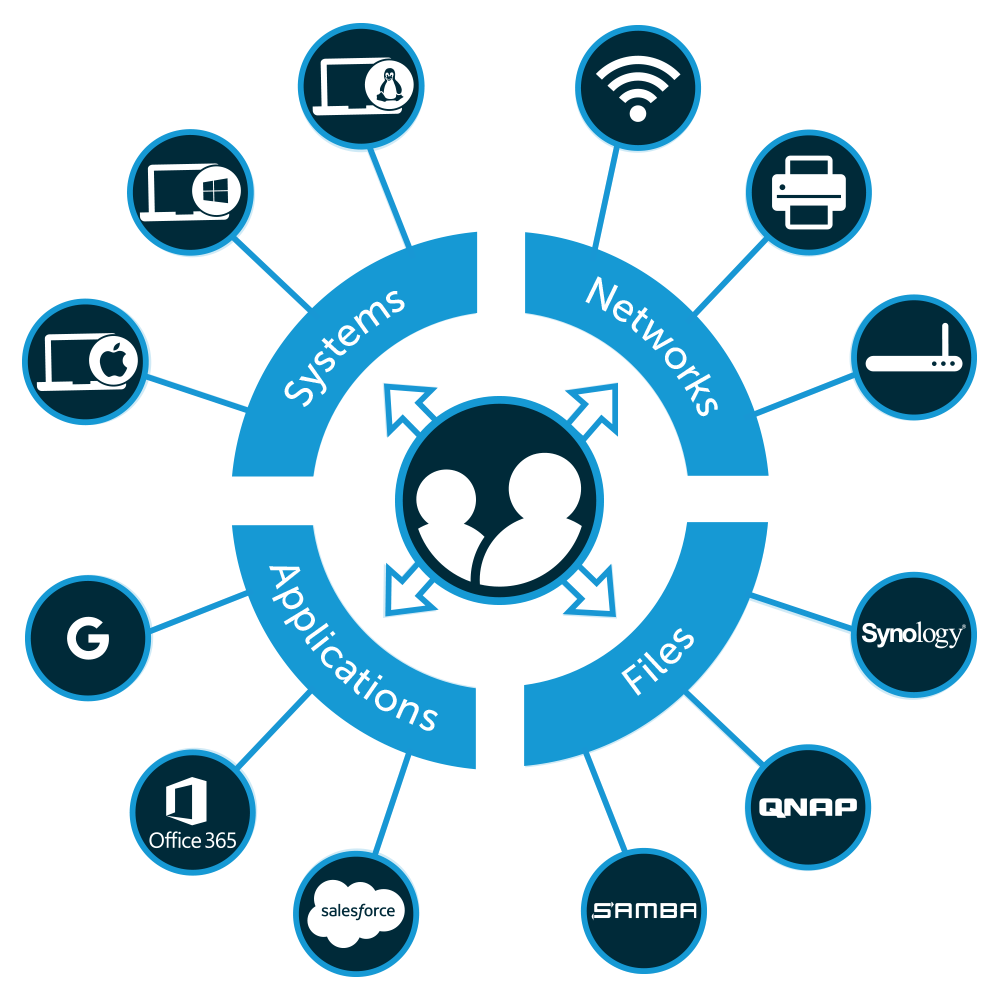The concept of a SaaS IdP (Software-as-a-Service Identity Provider) is a potential game changer for cloud-forward IT organizations. This is because the identity provider has traditionally been a complex on-prem solution like Microsoft® Active Directory (AD) or OpenLDAP. Fortunately, a powerful new SaaS IdP has emerged that is effectively AD and LDAP reimagined for the cloud.
In short, the powerful new SaaS IdP is called JumpCloud. This cloud based identity and access management (IAM) platform can be advantageous for a number of reasons, but first, we should discuss the importance of the identity provider from a holistic perspective.
Characteristics of the Identity Provider

Identity and access management is a foundational area for any IT organization. This is because the core task of IAM is to securely connect users to the IT resources they need to access. Directory services, which often act as the central identity provider, are designed to help IT admins accomplish this task.
The modern era of directory services kicked off with the advent of LDAP (Lightweight Directory Access Protocol). LDAP was created by our advisor, Tim Howes, and his colleagues at the University of Michigan in 1993. Howes told us they created LDAP as a means to secure the decentralized IT environments that were common at the time.
Two powerful directory service platforms emerged from LDAP a few years later. The first one to arrive was OpenLDAP in 1997. The other solution was Active Directory, which combined LDAP with the Kerberos protocol to provide user and system management capabilities for Microsoft IT resources, circa 1999.
Of course, IT admins already know that AD has been the primary on-prem IdP for almost twenty years now. However, IT organizations have seen diminished returns as newer and more powerful alternatives continue to enter the identity management space. Then, when you factor in the rise of Mac and Linux, cloud applications like Salesforce and Dropbox, cloud infrastructure like AWS and GCP, and plenty more where that came from, it becomes obvious that legacy IdPs will be obsolete in the near future.
This is because legacy identity providers like AD and OpenLDAP were designed to support homogeneous system environments and on-prem IT networks. So it should not come as a surprise that a new solution is necessary to support heterogeneous modern IT networks that leverage cloud technology. The simple fact is that tools like AD and OpenLDAP were designed for a different era of IT and struggle managing modern networks. The good news is that JumpCloud Directory-as-a-Service has emerged to provide a powerful new SaaS IdP solution.
Characteristics of the SaaS IdP

JumpCloud is a next generation SaaS IdP with the power to connect user identities to virtually any IT resource, regardless of platform, provider, protocol, or location. In essence, this cloud identity management platform can be thought of as AD and LDAP reimagined for the cloud.
However, JumpCloud isn’t just a cloud instance of AD or OpenLDAP. Rather, the JumpCloud SaaS IdP solution is a core cloud directory that can manage user access to systems (e.g., Windows, Mac, Linux), cloud and on-prem servers (e.g., AWS, GCP, on-prem data centers), web and on-prem applications via LDAP and SAML, cloud and on-prem storage (e.g., Samba file servers and NAS appliances), and wired and WiFi networks via RADIUS, for example. In short, JumpCloud offers a holistic identity management platform that combines the previously siloed IAM categories into one comprehensive SaaS IdP.
Learn More about the SaaS IdP called JumpCloud Directory-as-a-Service
Check out our whiteboard presentation to learn more about the architecture behind a SaaS IdP. You can also contact the JumpCloud team for more information.



